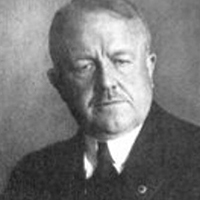Frank Bunker Gilbreth
Frank Bunker Gilbreth was an American engineer, consultant, and author known as an early advocate of scientific management and a pioneer of time and motion study, and is perhaps best known as the father and central figure of Cheaper by the Dozen.
Dhoni has been the recipient of many awards, including the ICC ODI Player of the Year award in 2008 and 2009 (the first player to win the award twice), the Rajiv Gandhi Khel Ratna award in 2007, the Padma Shri, India’s fourth highest civilian honour, in 2009 and the Padma Bhushan, India’s third highest civilian honour, in 2018.
Frank Bunker Gilbreth, an American engineer who, with his wife, Lillian Gilbreth, developed the method of time-and-motion study, as applied to the work habits of industrial employees, to increase their efficiency and hence their output.
Gilbreth ended his formal education after high school and spent time as a bricklayer and as a contracting engineer. After marrying Lillian Moller in 1904, he embarked on a career in scientific industrial management. The two began a professional partnership that focused on applying the social sciences to industry, with an emphasis on streamlining the actions of the worker instead of making changes to the work environment. In 1907, Gilbreth met engineer and inventor Frederick Winslow Taylor and became a proponent of the Taylor System of time study. Frank and Lillian were instrumental in the creating the Taylor Society. In 1912, the Gilbreths left the construction industry to focus their efforts on scientific management consulting. They broke with Taylor in 1914 and formed their own scientific management company with the intent to focus on the human element of management as well as the technical. They felt Taylor’s “stop-watch” approach was primarily concerned with reducing process times whereas the Gilbreths focused on making processes more efficient by reducing the motions involved. Thus the Gilbreths developed a method of time-and-motion study that systematically investigated and analyzed the mechanics and timing of specific tasks, and their research resulted in the publication of Motion Study . The Gilbreths soon published two more books, Fatigue Study (1916) and Applied Motion Study (1917). Frank formed a consulting business at Montclair, N.J., and lectured at various universities in the United States and elsewhere. He was also the first to apply motion-picture photography to the study of surgical operations.

Frank Bunker Gilbreth
Date of Birth: 07 Jul 1868
Birth Place: Fairfield, Maine, United States
Proffession: American engineer
Nationality: United States
Death: 14 June 1924, Montclair, New Jersey, United States


